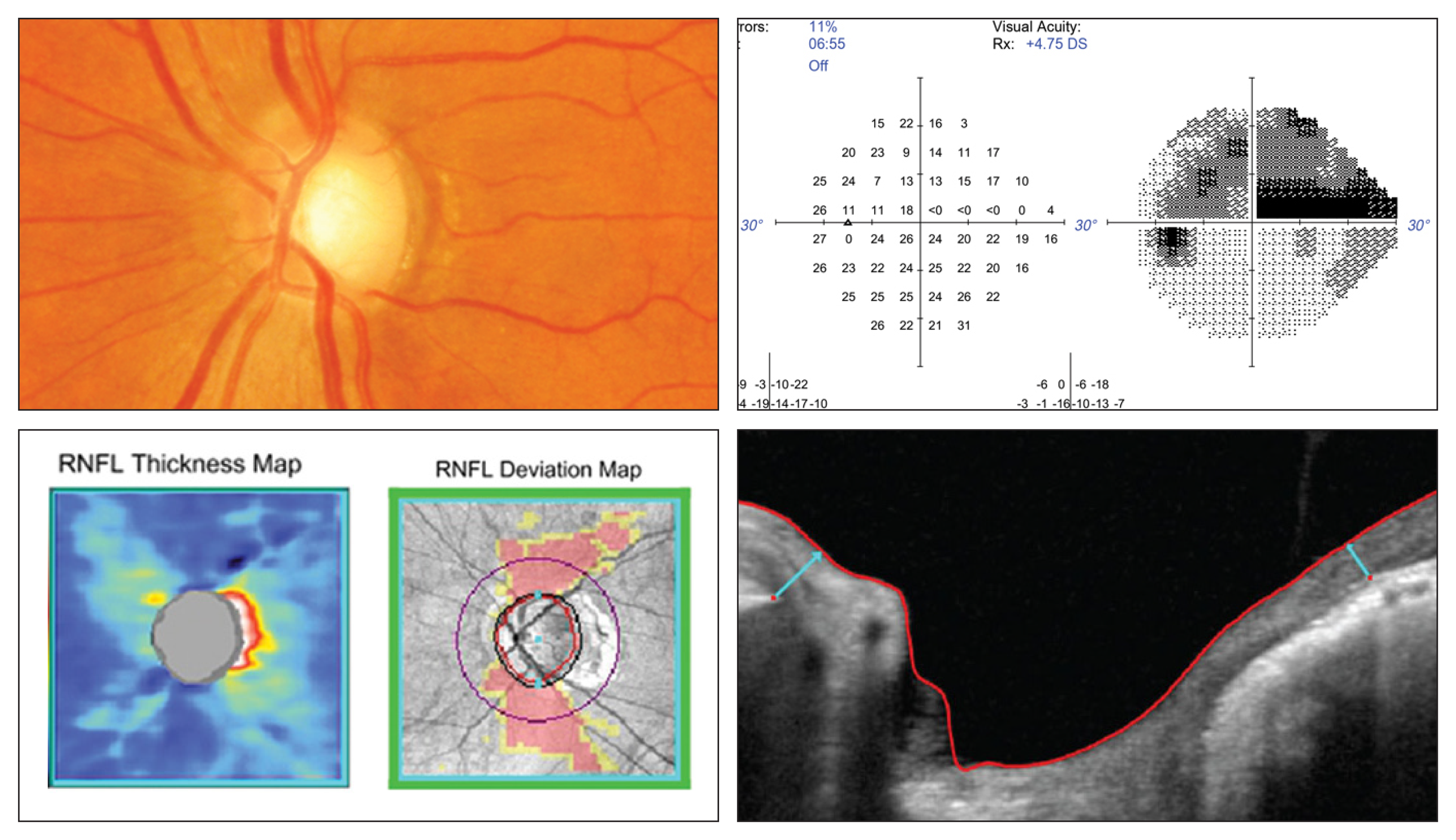Because prompt recognition of disease progression is the key to vision preservation, a recent study based out of Massachusetts Eye and Ear focused on whether detection of glaucoma progression is usually associated with concordance of structural and functional testing at the same clinic visit or not. The researchers’ longitudinal study over a five-year period found that both OCT structural parameters (i.e., RNFL thickness and minimum distance band rim thickness) and Humphrey visual field (HVF) functional parameters rarely progressed at the same time. Notably, the classic tests of structure and function detected disease progression in the same eye at the same visit in only 5% of eyes.
 |
|
Over a five-year period, it was rare for all four tests of structure and function—optic nerve head assessment, visual fields, RNFL thickness and BMO minimum rim width—to progress, (only 6.5% of eyes). Instead, progression is usually detected by just one or two tests (41.1% by only one test; 21.8% by two tests, respectively). Photo: Michael Chaglasian, OD, and James Fanelli, OD. Click image to enlarge. |
In 124 open-angle glaucoma patients at a single institution, one eye was randomly selected for each patient. Patients were included if they had open-angle glaucoma and if they had at least four yearly study visits. Study visits included a full dilated eye exam, disc photography, Humphrey visual field (24-2) testing, 2D OCT RNFL thickness measurements and a 3D OCT neuroretinal rim measurement called minimum distance band, “the high-density version of the commercially available low-density Bruch’s membrane opening-minimum rim width,” the authors explained in their paper for American Journal of Ophthalmology. For each test at each study visit, eyes were classified as progressors or non-progressors using event-based analysis.
The study found that 75% of eyes showed glaucoma progression by at least one of four tests by the end of the study period. The best overall agreements, including eyes of all glaucoma severities, were observed between minimum distance band thickness and RNFL thickness (17.5% of eyes) and between minimum distance band thickness and Humphrey visual field testing (16.1%), while the poorest agreements were observed between disc photography and RNFL thickness (5%) and between disc photography and Humphrey visual field testing (3.3%). Instead, progression is usually detected by just one or two tests (62.9% [78/124] of the time).
“This suggests that the higher sensitivity of the minimum distance band compared with traditional disc photography leads to better agreement in detecting progression at the same time as functional Humphrey visual field testing,” the researchers wrote in their paper. “This novel minimum distance band rim thickness OCT parameter measures neuroretinal rim thickness in 3D space and is a high-density version of the commercially available low-density Bruch’s membrane opening-minimum rim width.”
The researchers suggested that structural tests may better detect progression in pre-perimetric or early-stage glaucoma patients, while functional Humphrey visual field testing may detect progression better in advanced glaucoma patients.
“It is recommended that physicians use all available structural and functional testing to determine glaucoma disease progression, and that they should not wait for all structural and functional tests to progress and concur before escalating treatment,” they concluded.
Manik D, Ratanawongphaibul K, Kim J, et al. Frequency of agreement between structural and functional glaucoma testing: a longitudinal study of 3D OCT and current clinical tests. Am J Ophthalmol. May 27, 2024. [Epub ahead of print]. |

